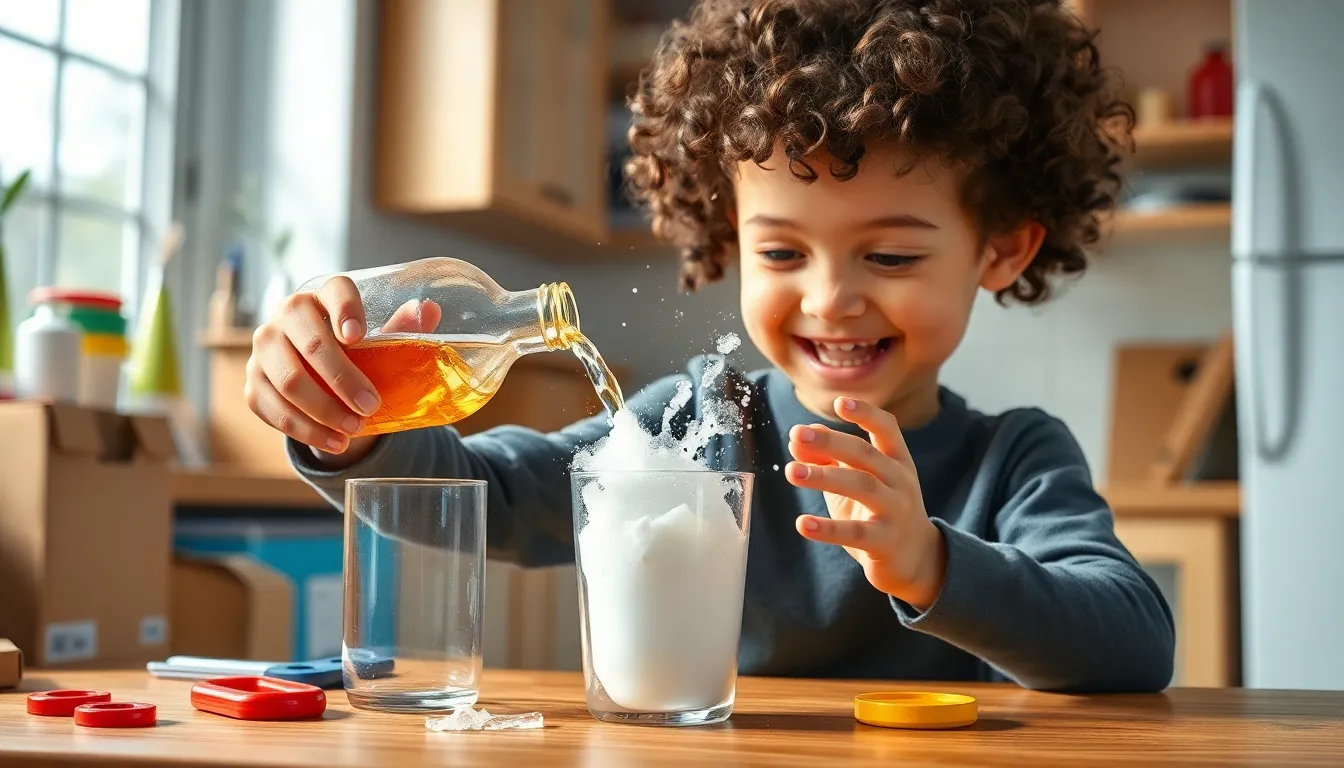STEM experiments for kids are like secret potions that spark curiosity and ignite a passion for learning. Imagine a world where kids can turn their kitchen into a mad scientist’s lab or their backyard into a mini-ecosystem. With just a few simple materials and a dash of imagination, they can dive into the fascinating realms of science, technology, engineering, and math.
Table of Contents
ToggleBenefits of STEM Experiments for Kids
STEM experiments offer numerous advantages that support children’s growth and education. Engaging in these activities cultivates essential skills while igniting curiosity.
Enhancing Creativity
STEM experiments promote creativity by encouraging children to think outside the box. Exploratory projects use everyday materials, inspiring innovative problem-solving. Experimentation allows kids to envision new ideas and approaches. Each project fosters imagination through open-ended questions. They learn to express originality while constructing solutions, making learning enjoyable and interactive.
Building Critical Thinking Skills
Critical thinking skills develop through hands-on STEM experiences. When children tackle challenges, they analyze problems and assess potential solutions. Engaging in discussions about results cultivates logical reasoning and decision-making. Assessing outcomes encourages evaluation of methods used, strengthening analytical abilities. Experimentation forms a foundation for strategic thinking, preparing children for future academic and life challenges.
Simple STEM Experiments to Try at Home

STEM experiments at home offer hands-on fun that sparks curiosity in kids. Simple materials commonly found around the house can transform into engaging projects.
Household Items You Can Use
Many everyday items serve as excellent resources for STEM experiments. Cardboard boxes can create simple structures for engineering challenges. Water provides a medium for experiments involving buoyancy and density. Basic kitchen ingredients, like vinegar and baking soda, allow for exciting chemical reactions. Old toys can serve as models for physics and motion experiments. Likewise, magnets, plastic cups, and soil support a wide range of scientific inquiries.
Step-by-Step Instructions
Each experiment requires clear instructions to ensure success. Begin by gathering all necessary items from the household list. Next, outline the steps in a simple manner. For example, mixing vinegar and baking soda creates an immediate reaction, so encourage kids to observe the fizz. Set specific goals for each project, emphasizing measuring, timing, and recording results. After completing each experiment, discuss findings. Encourage children to ask questions and explore variations for deeper understanding.
Fun STEM Experiment Ideas
Engaging in fun STEM experiments sparks curiosity and creativity in kids. Below are two exciting projects that utilize everyday materials to illustrate scientific concepts.
DIY Volcano Eruption
Creating a DIY volcano eruption captivates children’s attention while teaching them about chemical reactions. Start by gathering baking soda, vinegar, food coloring, and a container. Place the container in a tray to catch any spills. Add a few tablespoons of baking soda to the container, then mix in food coloring for visual effect. Pour vinegar into the container quickly for a bubbly eruption. This experiment demonstrates how acid-base reactions produce gas and create an explosive effect. Discuss the results and variations, such as adjusting the amounts to see how it affects the eruption size.
Making a Homemade Lava Lamp
Making a homemade lava lamp introduces kids to density and immiscibility. Begin with a clear bottle filled one-third with water. Add food coloring to the water for vibrant colors. Next, pour in vegetable oil, filling the bottle almost to the top, and watch as the oil separates from the water. For the final touch, drop in an effervescent tablet. As it reacts, it pushes colored water up through the oil, creating a mesmerizing lava lamp effect. Encourage children to experiment with different liquids or amounts to see how it changes the outcome.
Safety Tips for Conducting Experiments
Safety remains a top priority in any STEM experiment. Ensuring a safe environment allows kids to explore without unnecessary risks.
Supervision and Guidelines
Adult supervision is essential during experiments. Caregivers or teachers should monitor the entire process, providing assistance and guidance when needed. Establishing clear guidelines helps set expectations for behavior and safety. Encourage children to follow instructions carefully and discuss potential risks beforehand. Making it a collaborative experience can enhance understanding and foster responsibility.
Proper Handling of Materials
Proper handling of materials ensures safety and success. Always encourage children to read labels and understand the use of each item before starting. Disposable gloves or safety goggles may be necessary when dealing with reactive substances or sharp objects. Teaching kids to store materials properly after use reinforces safety procedures. Discussing the importance of cleaning up spills immediately can prevent accidents and promote a tidy workspace. Emphasizing respect for each material contributes to a responsible and engaging learning environment.
STEM experiments for kids open a world of discovery and creativity. By utilizing simple materials found at home, children can engage in hands-on learning that sparks their curiosity. These activities not only enhance critical thinking skills but also encourage innovative problem-solving.
With projects like the DIY volcano eruption and homemade lava lamp, kids can explore scientific concepts in an entertaining way. Parents and guardians play a vital role in ensuring safety and guiding discussions, making the experience both enjoyable and educational.
Embracing STEM at home can cultivate a lifelong passion for learning and exploration, setting the foundation for future success in various fields.









